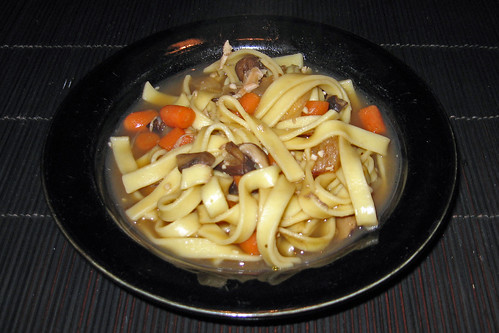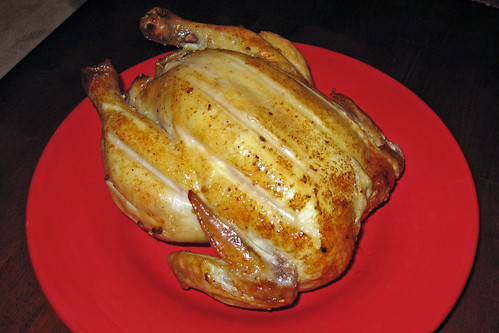In most stuffed mushroom recipes, bread crumbs bind the stuffing together. But when you work gluten-free, bread is right out. So I thought to myself, "What else binds foods together?"
Cheese and egg do quite often. Unfortunately, egg is out because my friend is an lacto-vegetarian and doesn't do eggs. But, done carefully, cheese can bind the stuffing together on its own. Specifically, a mixture of ricotta and mozzarella can.
Unfortunately, they were so good we ate them before I could get any pictures.
Stuffed Mushrooms
9 med. to large crimini mushroomsI prefer using crimini mushrooms to using large white buttons. Criminis are sometimes called baby portabellos -- with all that implies. I like the firmer, meatier texture; it gives the stuffed mushrooms more body. Criminis also can handle denser, heavier stuffings. I also prefer the flavor of criminis, richer and more savory than a white mushroom could ever dream of.
4 stalks of asparagus
2 green onions
2 teaspoons minced garlic
1 teaspoon olive oil
1 cup mozzarella cheese
1 cup ricotta cheese
Pepper to taste
Salt to taste
Clean and cut the asparagus and onions into coins. Remove the stalks from the mushrooms; these can be added to the stuffing if desired. Saute asparagus, onions, garlic, and optional mushroom stalks in the olive oil for 5 to 10 minutes. Add salt and pepper. Set aside to cool.
Preheat oven to 350°F (175°C).
Place mushrooms stalk side up in a baking pan. Combine the asparagus mixture with the ricotta and 1/3 of the mozzarella. Place in mushrooms. Cover the stuffed mushrooms with the remaining mozzarella. Bake for 20 minutes or until mozzarella begins to brown.
Serve piping hot.
The stuffed mushrooms were very cheesy, but quite yummy. The mushrooms were firm and moist, but not soggy. The cheese was, again, nice and firm. I had made ricotta cheese and the flavor just was incredible. I usually use these as an appetizer, popping them in the oven just as the guests arrive.


